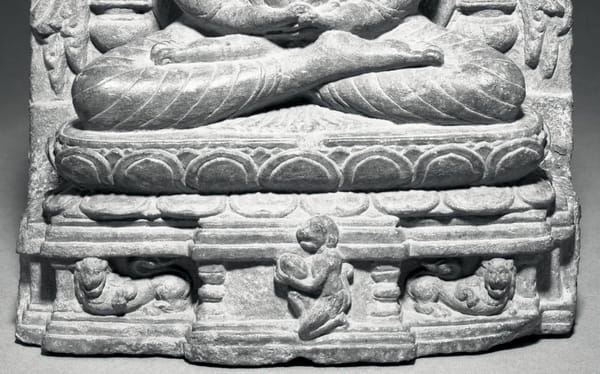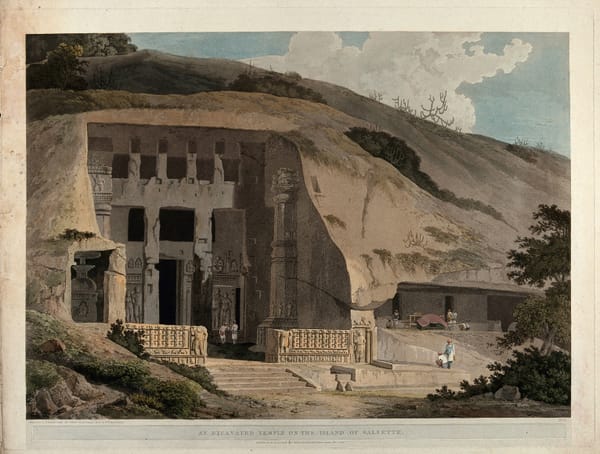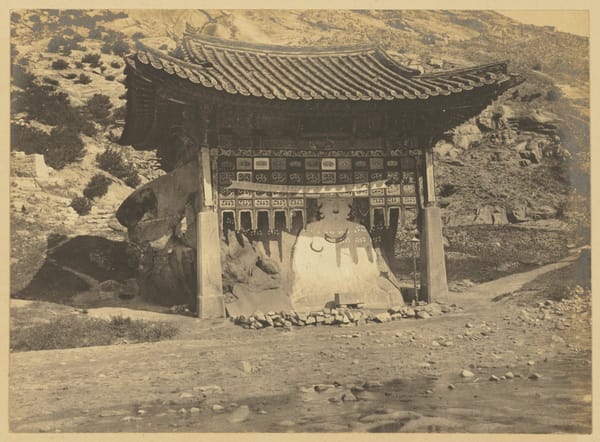Urchs - Paul Klee
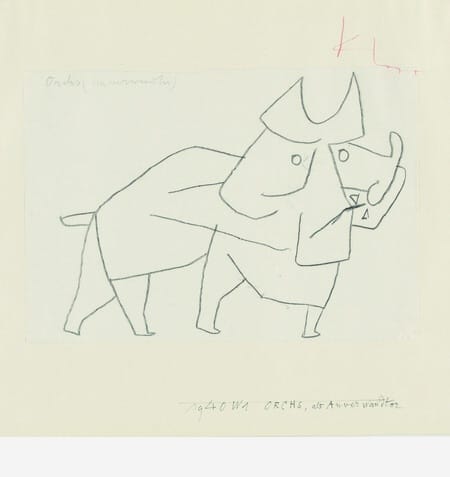
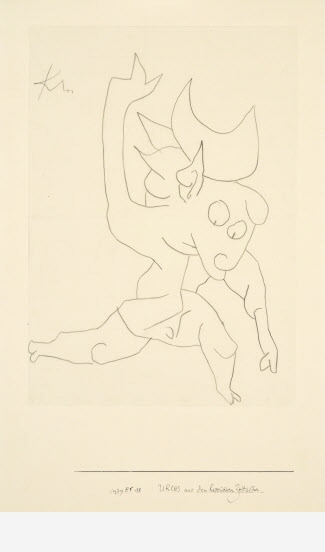
Urchs de l’époque Héroïque, 1939
Urchs from the Heroic Age
Chalk on paper on card
16 1/2 × 11 7/10 in
42 × 29.6 cm
Zentrum Paul Klee, Bern
After his return to Switzerland at the end of 1933, Klee became interested in the philosophy of Buddhism. In his ‘exile’ he read the book The Great Liberation – An Introduction to Zen Buddhism by Daisetz Teitaro Suzuki. His cycle of drawings about the “Urchse” is a reaction to the “ten ox pictures” illustrated in Suzuki’s book.
From Japonism to Zen. - Zentrum Paul Klee
Das Wort "Urchs" ist eine Wortschöpfung Klees, dem die Worte "Ur", dem Stammvater des Hausrindes, und "Ochse" wie auch das berndeutsche Wort "urchig" zu Grunde liegen.
Klee invented his "Urchse". The word "Urchs" is a word-creation of Klee, which is based on the words "Ur", the father-in-law of the house bark, and "ox" as well as the German word "urchig". Urchig means as much as primitive, original.

Paul Klee
Orchs, as Relative
1940, 61 (W 1)
chalk on paper on cardboard
20,5 x 29,6 cm
Zentrum Paul Klee, Bern
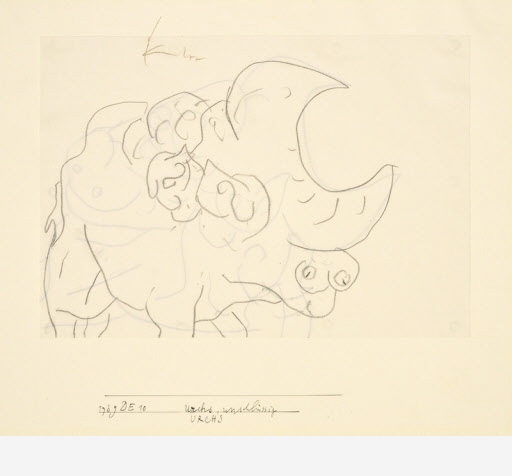
Paul Klee
Urchs, Undecided
1939, 1030 (DE 10)
chalk on paper on cardboard
20,8 x 29,5 cm
Zentrum Paul Klee, Bern
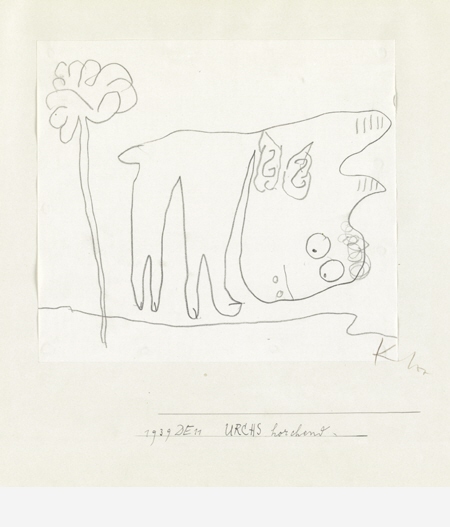
Paul Klee
Urchs, Listening
1939, 1031 (DE 11)
chalk on paper on cardboard
20,8 x 23,2 cm
Zentrum Paul Klee, Bern
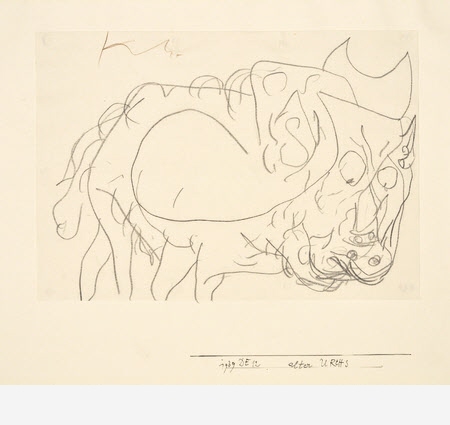
Paul Klee
Old Urchs
1939, 1032 (DE 12)
chalk on paper on cardboard
20,8 x 29,5 cm
Zentrum Paul Klee, Bern
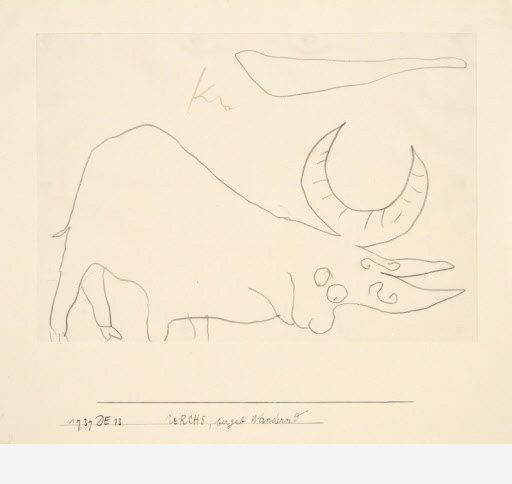
Paul Klee
Urchs, Wandering Downhill
1939, 1033 (DE 13)
chalk on paper on cardboard
20,8 x 29,6 cm
Zentrum Paul Klee, Bern
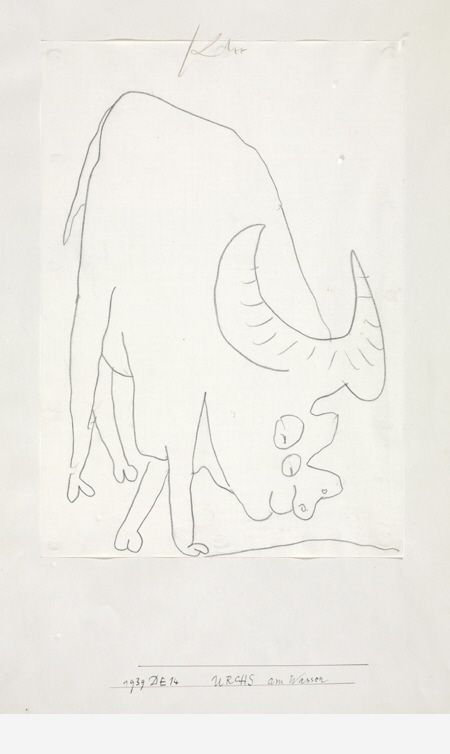
Paul Klee
Urchs By the Water
1939, 1034 (DE 14)
chalk on paper on cardboard
29,6 x 20,8 cm
Zentrum Paul Klee, Bern
Faced with Picasso's mythological self-staging, Klee obviously felt challenged to make a statement. "Scepticism about the Bull" was just a first reaction and during the next two years, further "counter representations" followed. Klee's answer to Picasso's bull and Minotaur portrayals was the "Urchs". The name — a word invented by Klee — clearly shows his intentions. The ox is just as present here as the aurochs, the extinct progenitor of the farm beast. In addition the word "urchig" in Berne dialect lies phonetically near to the high German "urig", meaning earthy. Unlike bulls, the "Urchses" are characterised as rare and antiquated beings, bordering on the ridiculous.
The Zentrum Paul Klee: Meeting Place of Klee and Picasso | The Tretyakov Gallery Magazine
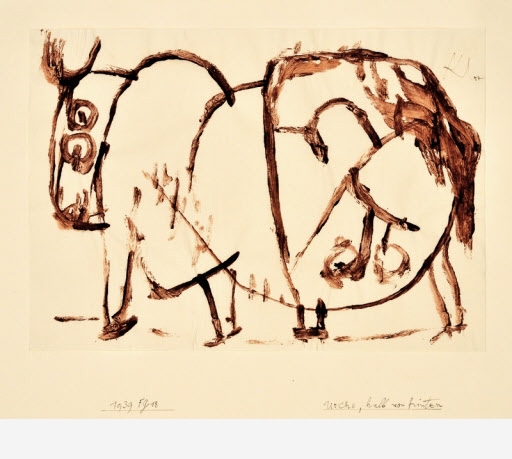
Paul Klee
Urchs, Half from Behind
1939, 1078 (FG 18)
coloured paste on paper on cardboard
20,8 x 29,5 cm
Privatbesitz Schweiz, Depositum im Zentrum Paul Klee, Bern
„Kunst gibt nicht das Sichtbare wieder, sondern Kunst macht sichtbar.“
“Art does not reproduce the visible; rather, it makes visible.”
– Paul Klee in Schöpferische Konfession (Creative Confession), 1920
